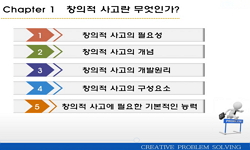오늘날 글로벌 다문화 영향 속에서, 중국의 현대 도자예술은 전통 기술에서 벗어나 현시대에 부합하는 사상과 문화를 반영하며 중국 민족 정신의 예술적 의미를 형성하고 있다. 그럼에도 불...
http://chineseinput.net/에서 pinyin(병음)방식으로 중국어를 변환할 수 있습니다.
변환된 중국어를 복사하여 사용하시면 됩니다.
- 中文 을 입력하시려면 zhongwen을 입력하시고 space를누르시면됩니다.
- 北京 을 입력하시려면 beijing을 입력하시고 space를 누르시면 됩니다.

중국 『주역』에 나타난 기호를 활용한 도자작품 사례연구 = A case study of ceramic artwork using symbols from the Chinese I Ching (周易)
한글로보기https://www.riss.kr/link?id=A109495948
- 저자
- 발행기관
- 학술지명
- 권호사항
-
발행연도
2024
-
작성언어
Korean
- 주제어
-
등재정보
KCI등재
-
자료형태
학술저널
-
수록면
5-29(25쪽)
- DOI식별코드
- 제공처
-
0
상세조회 -
0
다운로드
부가정보
국문 초록 (Abstract)
본 연구는 도자 예술의 사례 분석을 중심으로, 첫째, 중국 『주역』과 도자예술의 관계를 분석하고 기호학과 결합하여 『주역』 기호의 용어에 대한 정의를 내렸다. 둘째, 『주역』 기호의 도자예술 표현 방식을 탐색하였다. 셋째, 『주역』 기호의 창작 사고를 살펴보고 현대 중국 예술을 국제 도예와 연계함으로써 민족철학의 특성을 확장하였다.
오늘날 글로벌 다문화 영향 속에서, 중국의 현대 도자예술은 전통 기술에서 벗어나 현시대에 부합하는 사상과 문화를 반영하며 중국 민족 정신의 예술적 의미를 형성하고 있다. 그럼에도 불구하고 국제적인 차원에서 아이덴티티를 강화할 필요가 있다. 『주역』은 중국의 문화 및 사상의 근원이자, 중국에서 가장 오래된 기호 체계이기도 하다. 또한, 『주역』 사상은 중국 도자 예술의 심미적 측면에도 뿌리내려 상호보완적 관계를 형성한다. 이와 같이, 중국 『주역』 사상과 도자예술, 기호 사이에는 밀접한 관계가 있다. 기호학은 응용 분야 연구의 방법론으로서 『주역』 사상과 도자예술을 결합한 응용 연구에 적합하다. 따라서 본 연구는 이 세 분야를 융합해 도자작품에 활용된 주역의 기호를 구축하여 현대 도자예술의 새로운 창작 방향을 제시하고자 한다.
본 연구는 도자 예술의 사례 분석을 중심으로, 첫째, 중국 『주역』과 도자예술의 관계를 분석하고 기호학과 결합하여 『주역』 기호의 용어에 대한 정의를 내렸다. 둘째, 『주역』 기호의 도자예술 표현 방식을 탐색하였다. 셋째, 『주역』 기호의 창작 사고를 살펴보고 현대 중국 예술을 국제 도예와 연계함으로써 민족철학의 특성을 확장하였다.
다국어 초록 (Multilingual Abstract)
Focusing on the case analysis of ceramic art, this study firstly analyzes the relationship between the Chinese I Ching and ceramic art, and combines with semiotics to define the terminology of the I Ching symbol. Second, it explored the expression of the symbols of the I Ching in ceramic art. Third, it examined the creative thinking of the I Ching symbol and expanded the characteristics of ethnic philosophy by connecting contemporary Chinese art with international ceramics.
Today, under the influence of global multiculturalism, China's contemporary ceramic art has moved away from traditional techniques, reflecting contemporary ideas and culture, and shaping the artistic meaning of the Chinese national spirit. Nevertheles...
Today, under the influence of global multiculturalism, China's contemporary ceramic art has moved away from traditional techniques, reflecting contemporary ideas and culture, and shaping the artistic meaning of the Chinese national spirit. Nevertheless, it still needs to strengthen its identity at the international level. The I Ching (周易) is the source of Chinese culture and thought, and it is also the oldest symbol system in China. Its ideas are also deeply rooted in the aesthetic aspects of Chinese ceramic art, forming a complementary relationship. As such, there is a close relationship between Chinese I Ching thought, ceramic art, and symbols. As a methodology of applied research, semiotics is suitable for applied research that combines I Ching thought and ceramic art. Therefore, this study aims to integrate these three fields to establish the symbols of I Ching thought utilized in ceramic artworks, and to provide a new creative direction for contemporary ceramic art.
Focusing on the case analysis of ceramic art, this study firstly analyzes the relationship between the Chinese I Ching and ceramic art, and combines with semiotics to define the terminology of the I Ching symbol. Second, it explored the expression of the symbols of the I Ching in ceramic art. Third, it examined the creative thinking of the I Ching symbol and expanded the characteristics of ethnic philosophy by connecting contemporary Chinese art with international ceramics.
동일학술지(권/호) 다른 논문
-
- 한국도자학회
- 이윤희
- 2024
- KCI등재
-
- 한국도자학회
- 염미란
- 2024
- KCI등재
-
중국 현대 도자 예술 소재의 확장에 관한 연구 -경덕진 국제도예비엔날레 공모전 작품 사례를 중심으로-
- 한국도자학회
- 쟝치
- 2024
- KCI등재
-
회귀(回歸)를 중심으로 한 도자 조형 연구 - 뼈 형상을 이용한 연구자 작품을 중심으로 -
- 한국도자학회
- 왕영
- 2024
- KCI등재




 KCI
KCI 스콜라
스콜라




